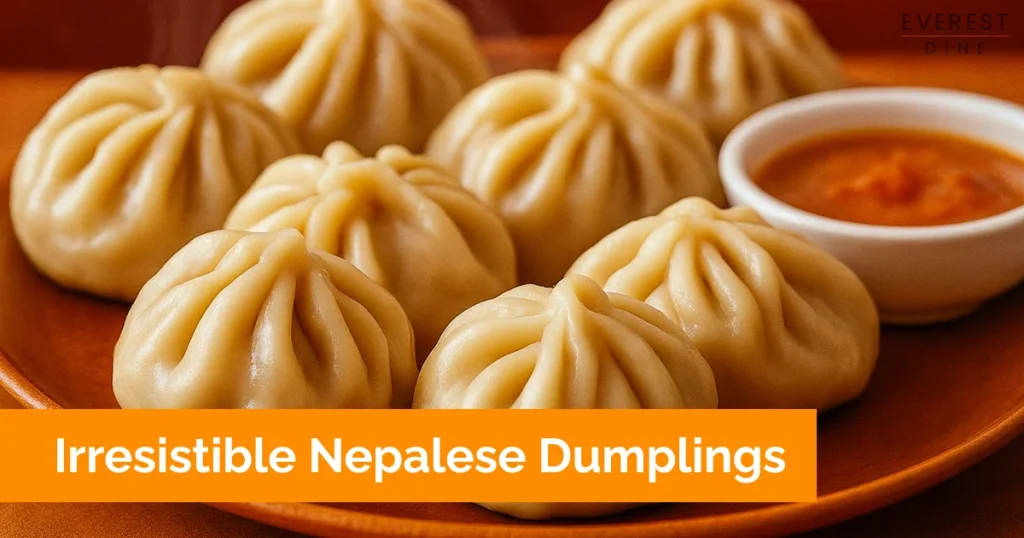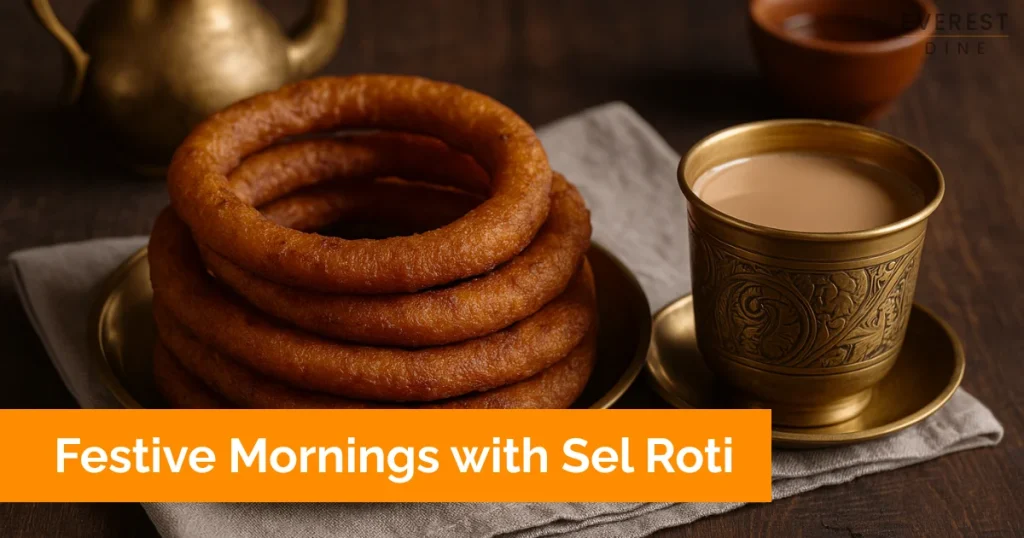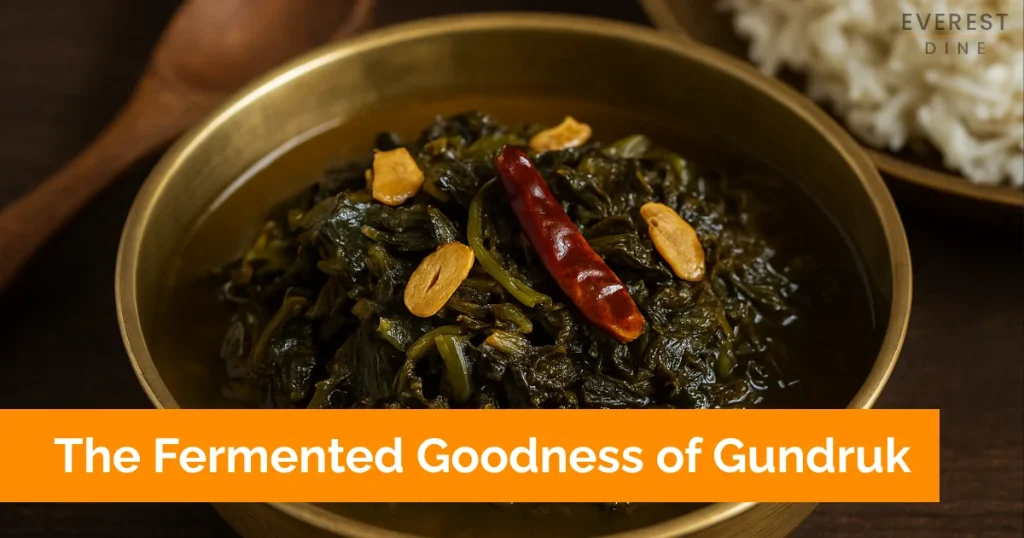Nepalese cuisine is a rich mix of flavours shaped by geography, culture, and history. Each dish tells a story of tradition and regional influences. From the hustle of Kathmandu’s streets to the calm of the mountains, the food offers an authentic taste of Nepal’s culture.
Nepal’s culinary traditions draw inspiration from Tibetan, Indian, and Asian influences, creating a unique cooking style. The food tends to be hearty, with herbs, vegetables, and spices playing an important role. While many dishes are shared across the country, each region has its own way of preparing them.
Nepalese meals focus on balance, combining spicy, sweet, salty, and sour elements. The result is food that’s simple but satisfying. Every meal offers a variety of tastes and textures.
Nepal’s Culinary Stars: Must-Try Dishes
Nepalese cuisine is home to several dishes that define its food culture. These are the meals that locals love, and visitors should not miss. Let’s look at some standout dishes that make Nepalese cuisine unique.
Dal Bhat
Dal Bhat is a staple of Nepalese cuisine, often considered the national dish. It consists of lentil soup (Dal) served with rice (Bhat) and is typically accompanied by vegetable curry, pickles, and sometimes meat. It’s eaten twice a day in many homes.
Dal is made with a variety of lentils, offering a good source of protein. It’s mildly spicy, balanced by the rice’s plain taste, and often served with tangy pickles. A well-cooked Dal Bhat is a meal full of comfort.
Momo

Momo is a beloved Nepalese dumpling, popular throughout the country. These dumplings are typically filled with minced meat, vegetables, or cheese. They are steamed or fried and served with a spicy dipping sauce.
Momos are easy to find in homes, restaurants, and on the streets. Whether as a snack or part of a meal, they are a favourite among both locals and visitors. The combination of flavours in each bite is simply irresistible.
Thukpa
Thukpa is a comforting noodle soup that’s enjoyed across Nepal. The dish consists of noodles, vegetables, and sometimes meat floating in a warm broth. It’s light but filling, making it perfect for cold days.
Although Thukpa originated in Tibet, it has been incorporated into Nepalese cuisine. Its simple, rich flavours make it a popular choice for those looking for a satisfying yet light meal. The soup is often seasoned just enough to warm you without overwhelming your taste buds.
Chow Mein
Chow Mein is a stir-fried noodle dish commonly found in Nepalese homes. It’s made with noodles, vegetables, and optional meat, all tossed in a tangy sauce. This dish is often enjoyed as a quick snack or meal.
You’ll find Chow Mein in street food stalls across the country. It’s a fast meal full of flavour, offering a satisfying crunch from the noodles and a savoury taste from the sauce.
Sel Roti
Sel Roti is a sweet, deep-fried bread that is typically served during festivals. It’s ring-shaped, made from rice flour, and crispy on the outside while soft inside. Often flavoured with cardamom, Sel Roti is a treat you can’t miss.
While it’s mostly eaten during special occasions, it can also make a great breakfast or snack. This dish adds a hint of sweetness to any meal, making it a popular choice across Nepal.
Gundruk

Gundruk is a fermented leafy green that’s been a part of Nepalese diets for centuries. Made from mustard or radish leaves, it’s sour and tangy, often served as a side dish or mixed into soups.
This dish is packed with nutrients and offers a unique flavour due to fermentation. Gundruk is a perfect example of how Nepalese cuisine incorporates fermented foods into daily meals, enhancing both taste and health benefits.
Dhindo
Dhindo is a traditional dish made from buckwheat flour. It’s similar to a thick porridge and is often served with dal or vegetables. This dish is most commonly found in the mountainous regions of Nepal.
Unlike rice or wheat, Dhindo has a distinct texture that adds variety to meals. It’s also gluten-free, which makes it a good option for those who need to avoid gluten. Dhindo offers a unique taste that’s both filling and nutritious.
Tingmo
Tingmo is a soft, steamed bread often served with curry. Made from flour, yeast, and sugar, it has a light sweetness that pairs well with spicy dishes. This fluffy bread is popular in the northern parts of Nepal.
Tingmo is great for soaking up gravies and sauces, making it a versatile side to any meal. It’s delightful when served with spicy meats or vegetable curries.
Yomari
Yomari is a steamed dumpling made from rice flour and filled with either sweet molasses or condensed milk. It’s particularly popular during the Yomari Punhi festival. This festival treat is both delicious and meaningful in Nepalese culture.
The steamed dough is soft, and the sweet filling adds a lovely contrast in texture. Yomari is not just a dish but a symbol of celebration, enjoyed during festivals and special occasions.
Sikarni
Sikarni is a sweetened yoghurt dessert, often flavoured with cardamom and topped with nuts. It’s a cool, refreshing treat that’s perfect after a hearty meal.
The thick yoghurt pairs perfectly with the aromatic spices, making it a satisfying dessert. Sikarni is commonly served during festivals, providing a nice end to any celebration.
A Comparative Look: Nepali vs. Indian Food
While Nepali and Indian food share some similarities, they are distinctly different in many ways. Both cuisines rely on spices, but Nepali food tends to be lighter and uses fewer spices overall.
Nepali
Nepali cuisine is lighter, with a focus on natural flavours rather than heavy spices. Dishes like Dal Bhat are common, with lentils being a major protein source. Fermented foods such as Gundruk add a unique tang to meals.
Momos are also very popular in Nepal and are often eaten as snacks or meals. While the food can be spicy, it is generally less intense than the curries in India.
Indian
Indian cuisine uses more oil and a wider variety of spices. Spice blends like garam masala are commonly used to add depth to many dishes. Indian meals often include rich curries, rice dishes, and fried snacks like samosas.
While fermentation exists in some Indian dishes, it’s less prevalent in everyday meals compared to Nepal. Indian cuisine is often more complex, with layers of flavour that come from multiple spices and cooking techniques.
A Day on a Plate: The Typical Nepali Meal
Meals in Nepal are straightforward, balanced, and meant to nourish the body. Here’s a closer look at a typical day of eating in Nepal.
Breakfast in Nepal

In Nepal, breakfast is often simple but filling. Tea (Chiya) is the drink of choice, typically served with roti (flatbread). On special occasions, sel roti might also be served, offering a sweet start to the day.
In some regions, tsampa, a roasted barley flour dish, is a common breakfast item. Other options include boiled eggs, porridge, or leftovers from the previous night’s meal.
The Heart of the Nepali Lunch
Lunch is the most important meal in Nepal. It’s usually a hearty plate of Dal Bhat, served with lentils, rice, vegetable curry, and achar (pickles). For special occasions, meat might be added to the meal.
Dal Bhat provides the right balance of protein, carbohydrates, and vegetables, making it a nutritious and satisfying meal. Tarkari, or vegetable curry, brings in seasonal flavours and variety.
Afternoon Bites and Snacks
In the afternoon, Nepali people enjoy snacks like momo and chow mein. Momos are dumplings filled with meat, cheese, or vegetables, while chow mein is stir-fried noodles. These snacks are perfect for recharging during the day.
Other popular street foods include fried potatoes, roasted corn, and samosas. These are quick, tasty, and easy to find across the country.
Dinner Traditions
Dinner is similar to lunch, with Dal Bhat often being the main dish. If lunch was heavy, dinner may be lighter, such as vegetable curry or rice dishes. Dinner is also a time for families to gather and enjoy their meal together.
Nepali Desserts and Treats
Nepali desserts are varied and delicious. Sikarni (sweetened yoghurt) is a common post-meal treat. Yomari is a festival favourite, a steamed dumpling filled with molasses or condensed milk.
Other popular sweets include sel roti and barfi, which are made from milk and sugar. These desserts are often served during celebrations, bringing a sweet ending to special occasions.
A Taste of Nepal: A Lasting Impression
The flavours of Nepalese cuisine offer an experience like no other. From the warmth of Dal Bhat to the delightful taste of Momos, each dish has its own unique character. If you’re exploring Nepal or just curious about its food culture, these dishes will leave a lasting impression.
The balance of spices, fresh ingredients, and cultural significance makes Nepalese food a truly rewarding experience. Whether you’re in Nepal or trying it at home, these dishes offer a genuine taste of the country’s rich culinary heritage.

